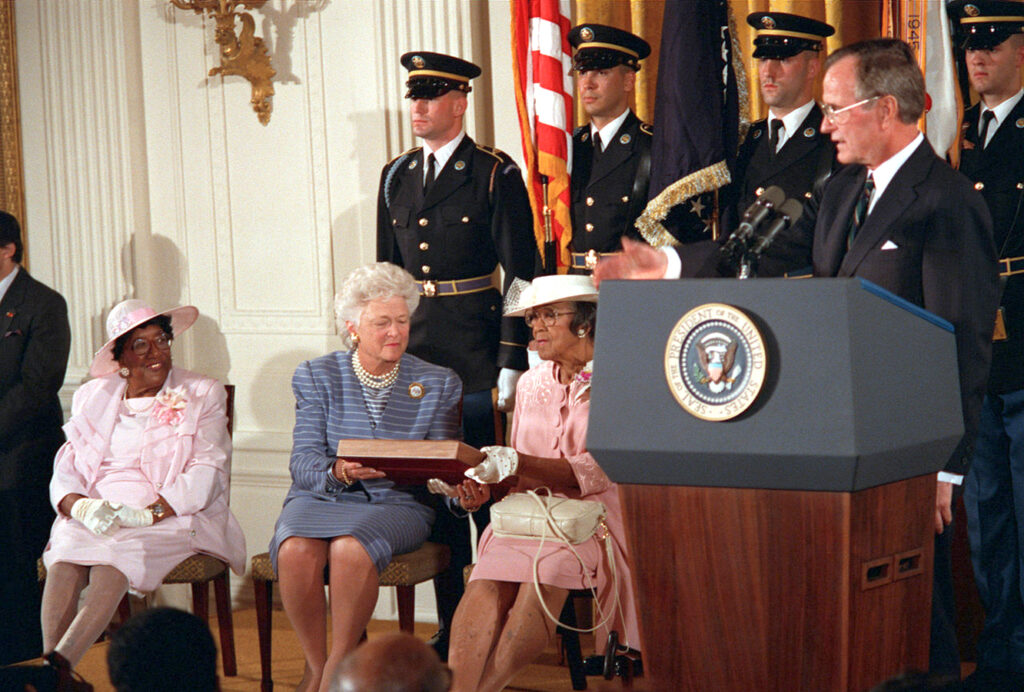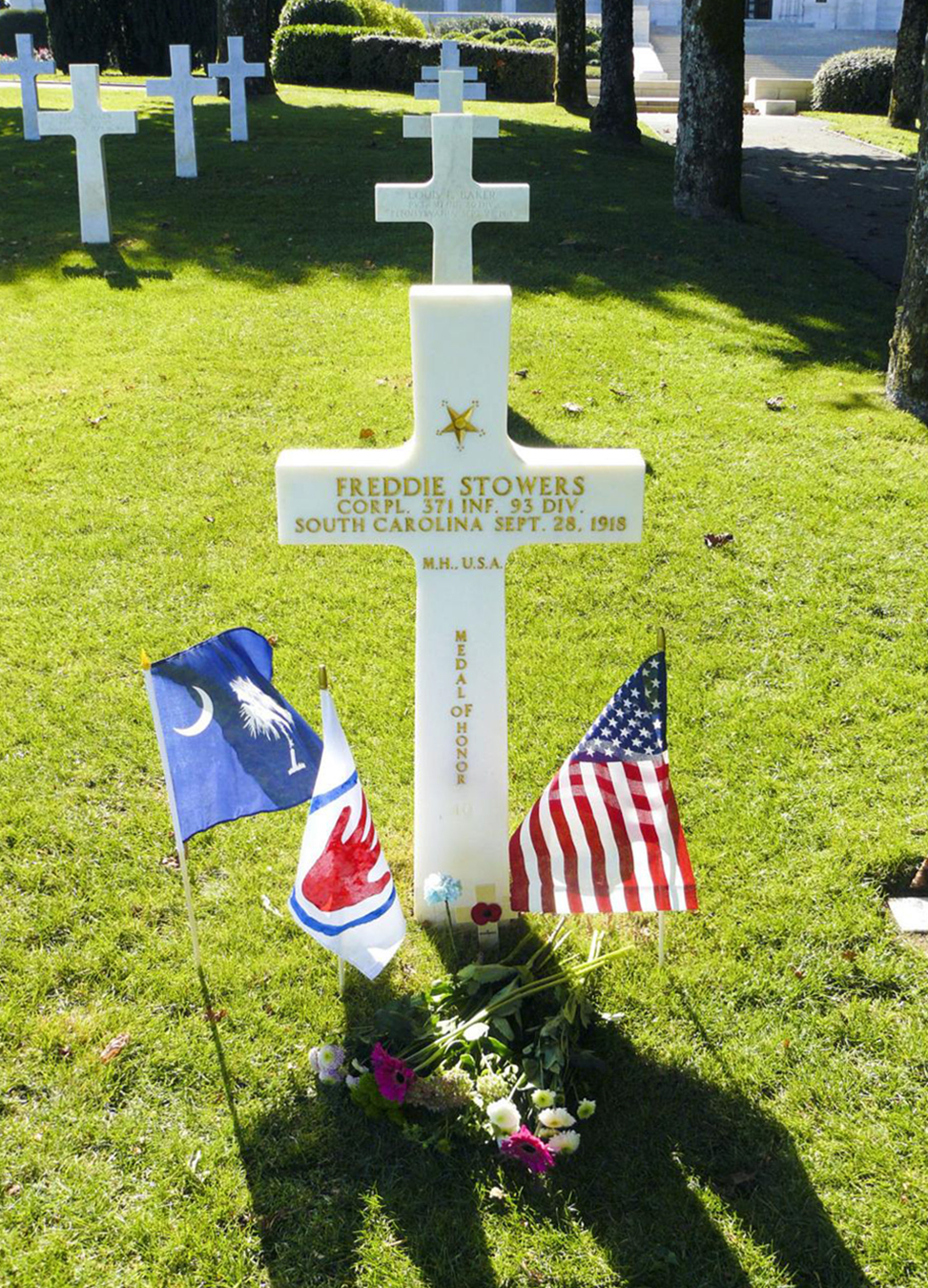Freddie Stowers, recognized posthumously for his heroism and bravery during the decisive Hundred Days Offensive in France in 1918, was the first Black soldier awarded the Medal of Honor, the highest U.S military decoration, for serving during World War I.
Born on January 12, 1896, in Sandy Springs, South Carolina to Wylie and Annie Stowers, Freddie Stowers was the fourth of ten children and grew up on his family’s farm. Later, he married Pearl Stowers and the couple had one daughter, Minnie Lee Stowers. The United States formally entered World War I in April 1917, and by October, 21-year-old Stowers was drafted into the U.S. Army and trained at Camp (now Fort) Jackson in Columbia, South Carolina.
More than half of Black soldiers were assigned to supply and service battalions whereas Stowers was assigned to the all-Black 93rd Division and Company C of the 371st Infantry Regiment as a combat soldier, and was promoted to Private First Class within two months.
In March 1918, General John Pershing, the commander of the American Expeditionary Force, which was created to support Allies in Europe, ordered the 371st and other Black Regiments to support the French military. By the next month, Stowers was sent overseas and attached to the 157th French Army, Red Hand Division, under General Mariano Goybet. This decision symbolically removed the French-trained, French-weapon-supplied Black American soldiers from the U.S. Army. It also effectively maintained the segregation policies of the U.S. Armed Forces at the time.
Black soldiers, however, soon learned that they enjoyed more civil rights due to the lack of similar discriminatory laws in France than they did in the United States. Stowers, building on his military expertise and training by the French, was promoted to Corporal in May 1918 and served as Squad Leader of Company C, less than a year after his conscription.
On September 28, 1918, he led his squad to capture Côte 188, a hill defended by German forces in the Ardennes region of France. The Germans resisted, firing off mortars, machine guns, and rifles, while his squad advanced. Not long into this attack, the Germans ceased fire and signaled their defeat. But, as Company C moved closer, they resumed firing with machine guns, killing or wounding half of Stowers’ company instantly, including the Lieutenant and higher-ranked officers.
Corporal Stowers, suddenly in charge of the Platoon, crawled under heavy fire, leading his men to target a machine gun nest in the first German trench line. Once that gun was destroyed, he led the assault to the second trench, and was critically injured by machine gun fire in the process. Still, he urged his troops to continue their advance. Emboldened by his fortitude, they persevered and successfully captured the hill. Stowers died from his wounds that day at 22-years-old and was buried with 133 of his fellow soldiers at the Meuse-Argonne American Cemetery and Memorial in Romagne-sous-Montfaucon, France.
France awarded the entire 371 Regiment the Croix de Guerre for valor and Stowers was recommended for the Distinguished Service Cross, the second-highest U.S. military decoration, by his commanding officer. This recommendation was raised to the Medal of Honor in December 1918.
An official investigation into the lack of Black Medal of Honor recipients in the 1980s revealed his original said-to-be-misplaced application in 1918. Seventy-three years later, on April 24, 1991, Georgiana Palmer and Mary Bowens, Stowers’ surviving sisters, accepted the Medal of Honor on his behalf from President George W. H. Bush at a White House ceremony. Stowers’ great-grandnephews, Senior Sergeant Douglas Warren and Technical Sergeant Odis Stowers of the U.S. Air Force, also attended.
Today, the Corporal Freddie Stowers Complex at Fort Jackson, South Carolina, and Stowers Elementary School in Fort Benning, Georgia are named after Stowers.



Comments are closed.